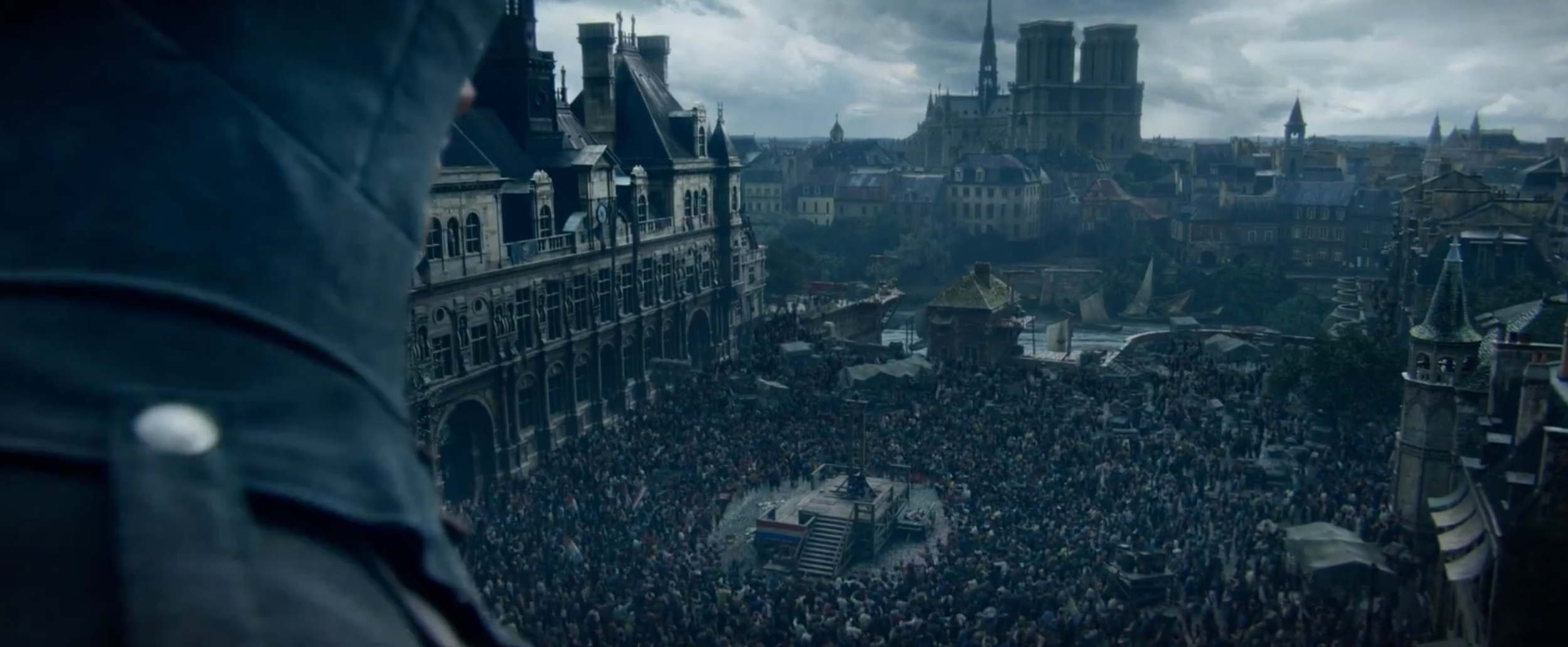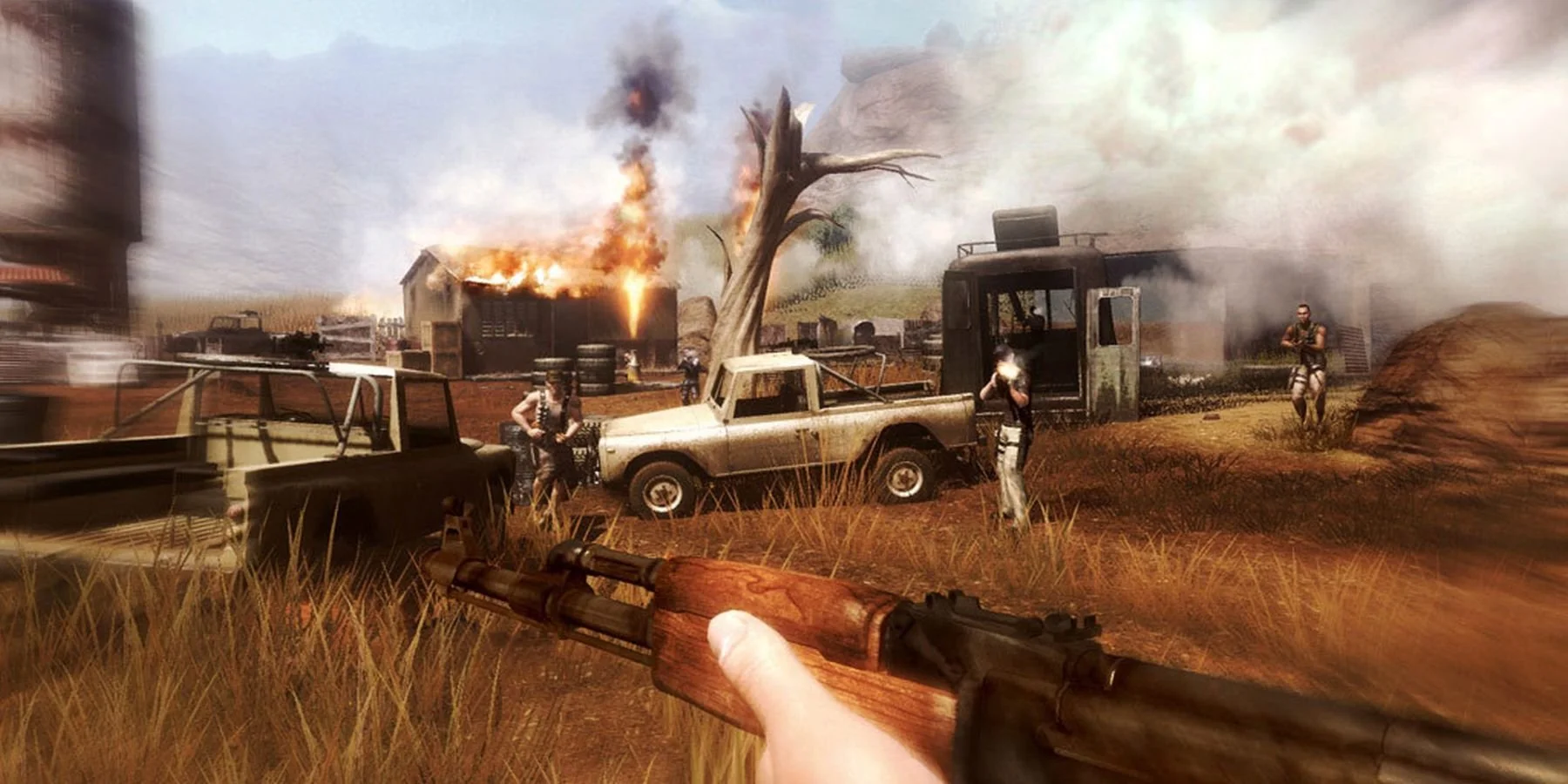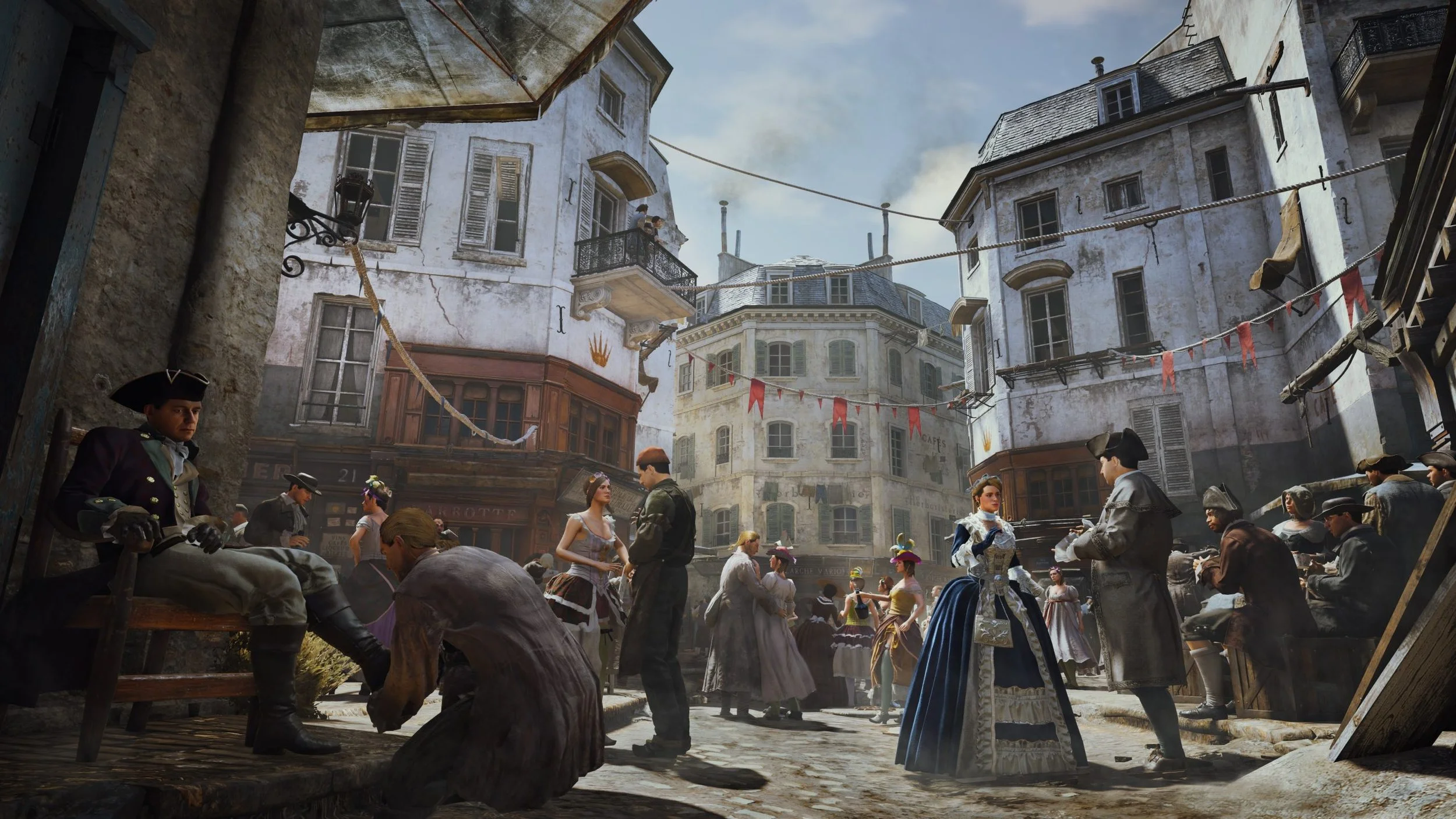From Script to Sandbox
Why the Best Stories in Games Aren’t Written
Image from Assassin’s Creed Unity, © Ubisoft Entertainment. All rights reserved.
I’ve always viewed myself as a storyteller, though I began my journey in this industry as an Art Director. I didn’t have traditional storytelling tools like dialogue or scripted scenes at my disposal, so I made do with what I had — art became my canvas for story.
Looking back on my work on Far Cry 2, the art direction wasn’t as much about making the game look good as it was about making it feel alive. The world of Far Cry 2 wasn’t static; it was procedural, dynamic, unpredictable. Grass burned, trees withered, dirt accumulated on weapons, and vehicles broke apart and eventually broke down.
Still, I saw this as secondary. After all — true narrative was character-driven: a hero overcoming obstacles, scripted twists, emotional payoffs. For a long time, that defined the pinnacle of storytelling in our medium — at least in my eyes.
But as time went on, my experience on Far Cry 2 shifted my view of what a story could be. It wasn’t just something to be told — it could be discovered, lived. It wasn’t limited to cutscenes or scripted events; it emerged from the systems and environments themselves.
Far Cry 2 taught me that systems could tell stories. The procedural fire that consumed the savannah or the dirt accumulating on your weapon wasn’t just visual flair — it became a vital thread in the players’ unique narrative tapestry. That realization has shaped my philosophy ever since: storytelling in games isn’t confined to one department — it’s woven into every aspect of the experience.
Image from Far Cry 2, © Ubisoft Entertainment. All rights reserved.
Scripts vs. Systems: Finding Balance
Scripted narratives have long been the backbone of story-driven experiences. Titles like The Last of Us or God of War offer masterfully crafted stories, emotionally resonant and tightly structured. They’re akin to films or novels — taking players on a journey where every beat is carefully planned and executed.
There’s an undeniable power in that approach. A well-told story can evoke deep emotions and deliver unforgettable moments. It’s partly why those games, and others like them, have earned such acclaim.
But video games offer something no other medium can — agency.
In scripted games, you follow story breadcrumbs carefully placed by writers and narrative teams. In player-driven experiences, the story emerges from the systems, the world, and — your choices.
Titles like Breath of the Wild and Far Cry 2 give you a narrative spine intended to guide you through a sandbox filled with tools and possibilities. But the real story comes from what you do. Did you accidentally set the savannah on fire while firing a rocket at an enemy camp? Did you survive a terrifying night in a cave because you improvised a shelter? Those moments are your story — intimate, unrepeatable, unforgettable.
Emergence happens when simple rules interact to create unpredictable, complex outcomes. It’s what turns a collection of systems into a living, breathing world where no two stories are alike.
This is where systemic design shines. Instead of scripting every moment, designers create frameworks where simple rules combine and interact to produce complexity — emergence.
This turns games into anecdote factories — story engines designed to produce countless, unique stories for every player. An anecdote factory isn’t about experiencing a story — it’s about experiencing your story.
When backdrops come alive
Image from Assassin’s Creed Unity, © Ubisoft Entertainment. All rights reserved.
As Creative Director on Assassin’s Creed Unity, I aimed to push the boundaries of what an immersive open-world city could be. Before Unity, Assassin’s Creed cities often felt like elaborate sets — beautiful but hollow. They were backdrops for missions, places to run, climb, and hide, but not places to live.
In Unity, Paris wasn’t just a setting — it was a character in its own right. The city had to feel alive, bustling with credible NPCs who had their own lives, routines, and stories. Markets, protests, muggings, murders, puzzles hidden in plain sight — they weren’t just eye candy; they were opportunities for players to engage and carve their own path.
Of course, we were limited by the tools and technology available at the time, but the goal was clear: to make the world more than a stage for pre-scripted events. We wanted it to be a playground for discovery, immersion, and emergence.
Today, with advances in AI, procedural generation, and dynamic systems, we can take this even further. What if every NPC in a game wasn’t just a set piece but a fully realized character with goals, relationships, and memories? What if the world itself remembered your actions and evolved in response?
Imagine helping a struggling merchant, only to see them rise to power and become your future antagonist — not because of a simple reputation meter, but because the game’s systems dynamically tracked their evolving ambitions and influence. Or consider a thriving city that collapses into chaos after your decision to assassinate its mayor triggers procedural unrest, with citizens protesting and police enforcing curfews.
These aren’t the kind of moments that can be planned; they’re born from systems designed to adapt and respond in ways that even the creators couldn’t fully predict. These aren’t just hypotheticals — they’re the future of entertainment.
Your Story, Your way
The next generation of games won’t just feature worlds as backdrops — they’ll be living ecosystems that react and adapt to the player. Every decision becomes a thread in the player’s unique narrative tapestry, transforming games into true anecdote factories.
A movie can show you a world. A book can let you dive into a character’s deepest thoughts. But a game lets you shape your story and create something utterly unique to you.
This philosophy doesn’t just apply to sprawling open-world games. It’s not about scope — it’s about intent. Even smaller games can embrace systemic thinking and focus on meaningful player agency.
The path ahead…
We are at a turning point in our medium. The next Miyamoto, Meier, and Carmack is out there right now, using emerging tools to invent the next genre or define the next paradigm shift.
We have the chance to reimagine what’s possible, to expand the horizons of what games can be.
Let’s set the stage — and watch players carve their own unforgettable paths.


